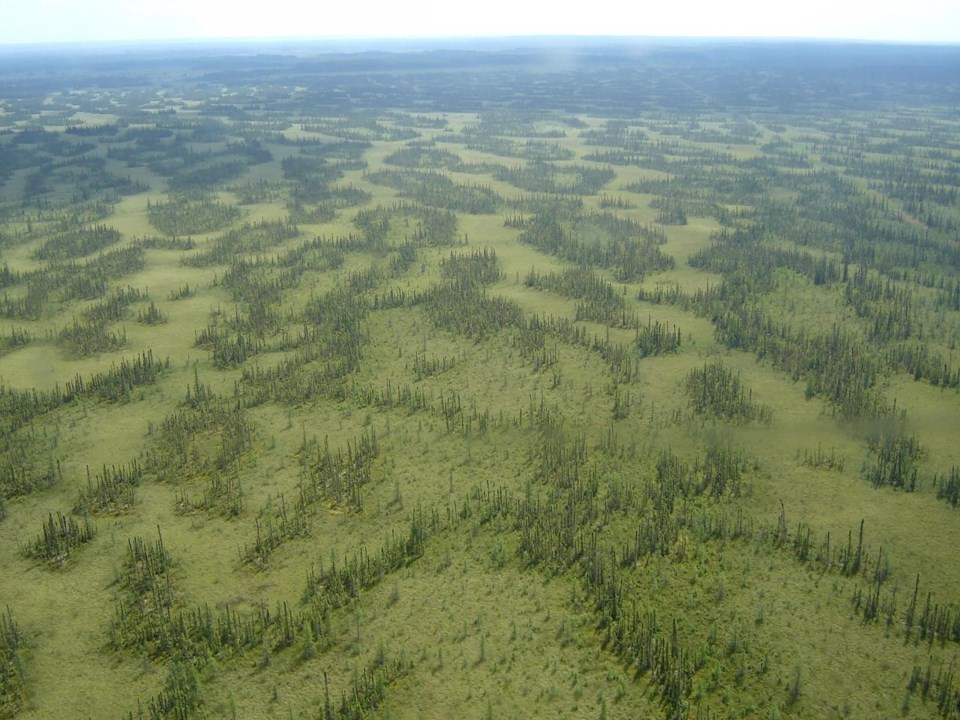Oilsands giant Suncor has warned the Alberta Energy Regulator that reopening a debate over mining an ecologically valuable wetland would play into the hands of industry opponents and upset the province's energy development.
In documents filed Thursday, the company says the agency shouldn't go any further with the Alberta Wilderness Association's request to reconsider approvals to mine a portion of McClelland Lake, a large and intact wetland about 90 kilometres north of Fort McMurray once considered for conservation.
"Granting the (association's) request ... would endorse (its) strategy, which appears to be to undermine Alberta’s regulatory system and to create a disconcerting precedent whereby requestors could utilize the (regulator's) reconsideration powers to intentionally boycott (its) processes and subsequently compel new and unnecessary processes," the filing says.
Suncor's operating plans for the project were approved last fall. But in April, the Alberta Energy Regulator decided to open its reconsideration process for that approval after the association presented studies saying mining would damage the wetland and release thousands of tonnes of carbon.
The regulator is now considering whether to proceed to the second stage of reconsideration.
The company's submissions include detailed critiques of the association's studies.
As well, Suncor, majority owner of lease-holder Fort Hills Energy, says the environmental group had its chance to make its concerns known.
"(The association) deliberately boycotted the process. It was invited several times and refused to work with the (sustainability committee) and refused to comment on the (operating plan) prior to its approval, despite ample opportunity to do so."
It adds that the association admits it's not directly affected by those plans — one of the criteria the regulator uses to determine who's eligible to appear before it.
"This precedent would be even more troubling considering the (association) ... is not directly affected by the decision ... and therefore would not normally have been included in any hearing," it says.
To preserve the unmined wetland, Suncor proposes a complicated set of wells and pumps to control and monitor water levels and chemistry. Its centrepiece is a wall, nearly 14-kilometres long and between 20- and 70-metres deep, which would protect the unmined portion while the rest is drained and excavated.
The association calls that plan untested and risky. It adds plans to maintain water levels are based on only a few years of data — not good enough as climate change alters the rules.
The Alberta Wilderness Association, in previous filings, has said it didn't join the sustainability committee because it presumed the mine would proceed.
"The sole purpose of the (committee), to facilitate something which in (the association's) view will destroy the unmined portion of (McClelland Lake), is in direct conflict with (the association's) mandate and is therefore not a process in which (it) could reasonably have participated," it said.
Phillip Meintzer, conservation specialist with the association, said the regulator's rules for who gets to speak could be too restrictive.
"Maybe it's time we had a process that opens it up," he said. "Maybe we need more room for public comment on these processes."
The McClelland Lake complex, about 90 kilometres north of Fort McMurray, comprises 60 square kilometres in two large, patterned fens — peat-producing wetlands featuring long strings of trees and shrubs separated by narrow pools.
Twenty rare or endangered plant species and communities live there. More than 200 migratory bird species, including endangered whooping cranes, use it as a stopover.
First Nations have used it for centuries.
One scientist estimates the complex stores the equivalent of between eight million and 35 million tonnes of carbon dioxide. The entire amount of carbon dioxide sequestered in Alberta’s carbon capture and storage programs since 2015 is 10.5 million tonnes.
The association wants the entire area protected.
The complex was originally excluded from development. That was lifted in 2002 for the part of the wetland within an oilsands lease then owned by True North Energy.
The wetland overlays an estimated billion barrels of bitumen.
This report by The Canadian Press was first published July 28, 2023.
Bob Weber, The Canadian Press




